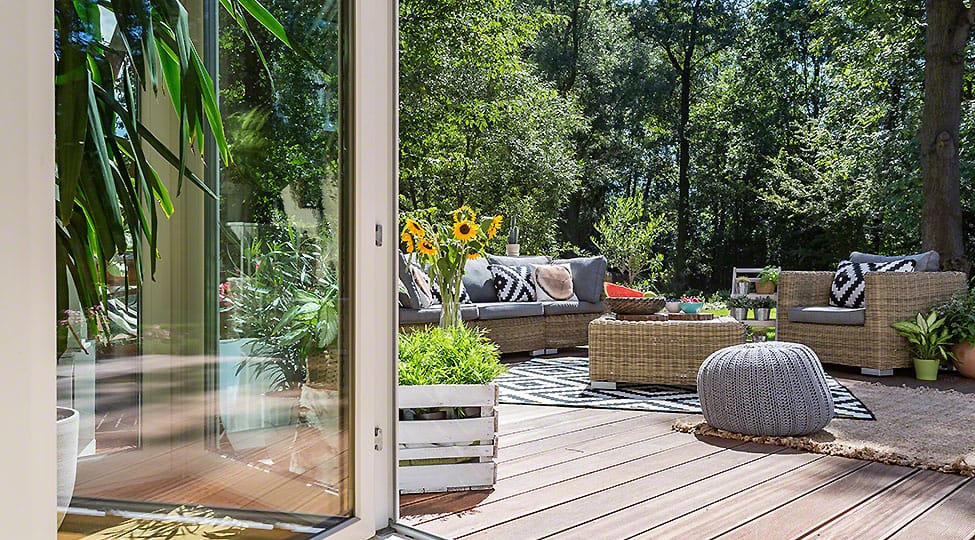
Which materials to choose for your patio?
Flagstone Patio
- Flagstone has narrow joints which let water seep in instead of flowing which a patio contractor knows how to design.
- It is a sedimentary rock and comes in earthy tones – brown, red, gray – giving it a natural look. Since it is obtained naturally, there are limitations in terms of colors.
- They are durable. Most commonly used flagstones are sandstone, slate and limestone.
- Since it is a natural product, it comes in irregular shapes, sizes and thickness. Placing these stones is similar to laying out the pieces of the puzzle. This makes it too difficult to lay. Moss or grass can be grown between the stones.
- Maintenance can be difficult, especially when trying to remove the snow. A plow cannot be used because of the uneven edges and a shovel because it can cause obstruction while cleaning the tracks. A snow blower is recommended to clear the snow.
- Replacing a damaged flagstone patio is easier.
- The cost depends on the location, amount of material used, kinds and color. It is expensive depending on how it is set up. Flagstone mortared on a concrete slab is pricier than dry laying it at the base of sand and gravels. Each piece has to be fitted correctly and leveled horizontally.
Pavers Patio
- Since it is manufactured, it comes in a multitude of surfaces, finishes, colors and shapes. They provide design flexibility which means one can customize the pattern to suit their needs.
- Due to joints in the surface, it protects from drainage during the rainy season and resistance from skidding due to snow.
- They absorb less heat since it is laid on a concrete slab with sand swept joints between them.
- Since it is made in a controlled environment, it does not have layers as flagstone and one need not fret about the stone breaking or cracking over a period of time.
- They are made of either concrete, brick or stone and comes with a guarantee.
- They are less expensive compared to Flagstone Patios.
CATEGORIES Business & Finance
